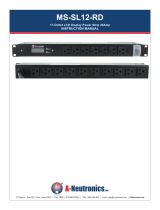
4–SR-IOV Configuration Using the 3400/8400/45000 Series Adapters
Configuring SR-IOV on the Controller Node
8 83840-546-02 B
4. On the controller node running nova-scheduler, modify the
/etc/nova/nova.conf file [DEFAULT] section to add the following:
PciPassthroughFilter to the scheduler_default_filters
parameter
A new line for the scheduler_available_filters parameter:
[DEFAULT]
scheduler_default_filters =
RetryFilter, AvailabilityZoneFilter, RamFilter,
ComputeFilter, ComputeCapabilitiesFilter,
ImagePropertiesFilter, ServerGroupAntiAffinityFilter,
ServerGroupAffinityFilter, PciPassthroughFilter
scheduler_available_filters =
nova.scheduler.filters.all_filters
5. Change the Neutron server configuration.
The Neutron server must be run with the following two configuration files:
/etc/neutron/plugins/ml2/ml2_conf.in
/etc/neutron/plugins/ml2/ml2_conf_sriov.ini
a. Navigate to the configuration files’ location by issuing the following
command:
# cd /usr/lib/systemd/system
b. Edit the neutron-server.service file and add the
ml2_conf_sriov.ini configuration file as follows:
ExecStart=/usr/bin/neutron-server --config-file
/usr/share/neutron/neutron-dist.conf --config-file
/etc/neutron/neutron.conf --config-file
/etc/neutron/plugin.ini --config-file
/etc/neutron/plugins/ml2/ml2_conf_sriov.ini --log-file
/var/log/neutron/server.log
6. Restart the Neutron server by issuing the following commands:
# systemctl daemon-reload
# systemctl restart neutron-server.service
# systemctl restart openstack-nova-scheduler.service
























